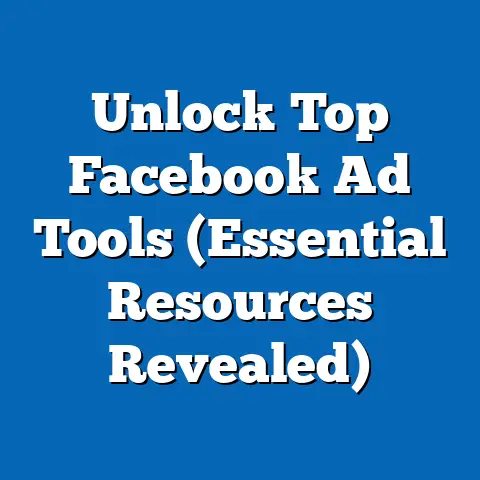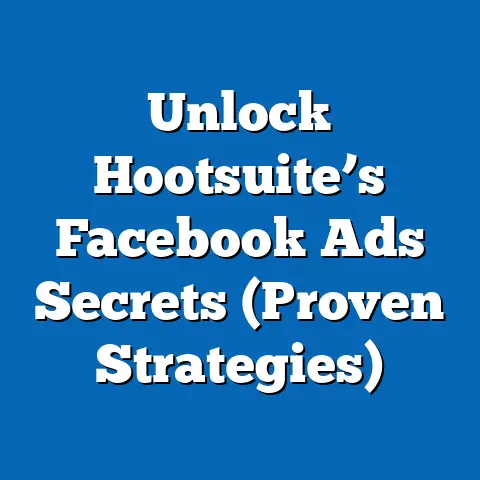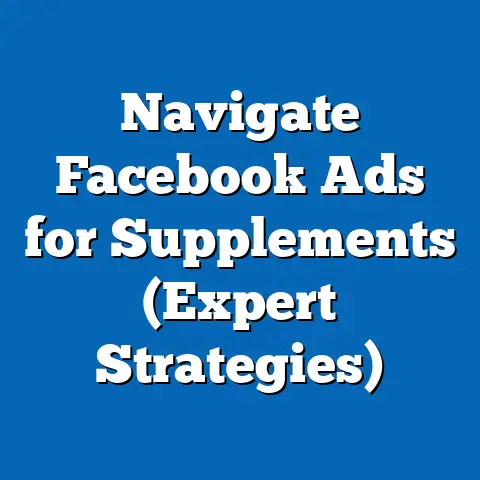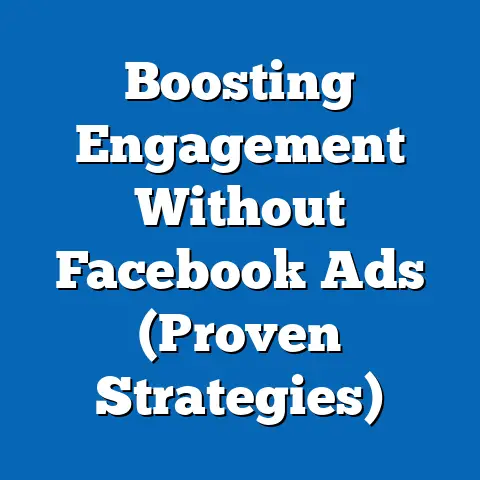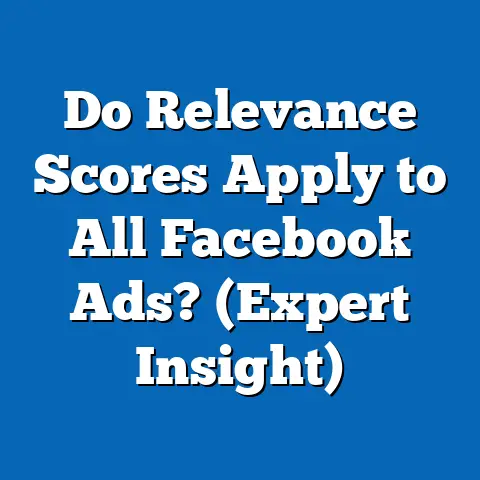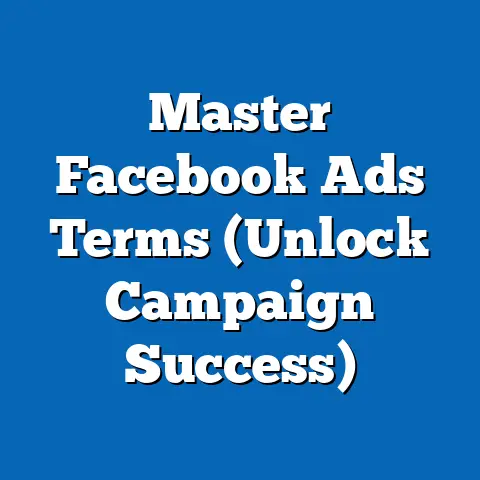Unlock Effective Facebook Ads (Proven Strategies)
I’ve spent years diving deep into the world of Facebook advertising, and one thing has become abundantly clear: it’s not just about throwing money at the platform. It’s about creating genuine connections with your audience. Think of it like this: have you ever walked into a store where the staff was cold and uninterested? You probably turned right around. The same principle applies online. That’s where the concept of “warmth” comes in. Warmth in advertising isn’t just about pretty pictures or clever slogans; it’s about forging a real human connection. It’s about understanding your audience’s needs, speaking their language, and showing them that you genuinely care.
Emotional engagement is the secret sauce that turns casual browsers into loyal customers. A cold, impersonal ad might generate a click, but a warm, relatable ad will spark a conversation and build trust. I’ve seen firsthand how a seemingly small shift towards a warmer approach can dramatically increase conversion rates. Remember that time I worked with a local bakery? Their initial ads were all about product features – “Best croissants in town!” – but they weren’t resonating. We revamped the campaign to focus on the story behind the bakery, the family that ran it, and the joy their pastries brought to the community. The results? A significant increase in engagement and a flood of new customers.
In this article, I’m going to share some proven strategies to help you infuse warmth into your Facebook ads and unlock their full potential. We’ll explore everything from crafting emotionally resonant ad copy to selecting visuals that evoke positive feelings. Get ready to transform your Facebook ads from cold, impersonal pitches into warm, engaging conversations that drive results.
Understanding the Facebook Ads Ecosystem
Before we dive into the specifics of crafting warm and engaging ads, it’s crucial to understand the fundamental building blocks of the Facebook advertising platform. Think of it as learning the rules of the game before you start playing.
At its core, Facebook advertising allows you to target specific demographics, interests, and behaviors. You can set a budget and bid for ad placements, determining how much you’re willing to pay to show your ad to a particular audience. Facebook’s algorithm then optimizes your ad delivery to reach the people most likely to take the desired action, whether it’s visiting your website, making a purchase, or simply liking your page.
One of the biggest advantages of Facebook advertising is the wealth of data it provides. You can target audiences based on their age, gender, location, interests, relationship status, education level, and even their purchasing behavior. This level of granularity allows you to create highly targeted campaigns that resonate with specific segments of your audience.
Here are a few key concepts to get you started:
- Facebook Pixel: This is a small piece of code that you install on your website. It tracks visitor behavior, allowing you to retarget people who have visited your site and measure the effectiveness of your ads. I always tell clients, “Install the pixel yesterday!” The sooner you have it running, the more data you’ll collect.
- Custom Audiences: These are audiences you create based on your existing customer data, such as email lists or website visitors. You can upload your customer list to Facebook, and the platform will match those individuals with their Facebook profiles. This is a powerful way to reach your existing customers with targeted ads.
- Lookalike Audiences: This is where the magic happens. Facebook uses your custom audiences as a seed to find new people who share similar characteristics and behaviors. This allows you to expand your reach to a highly relevant audience that is likely to be interested in your products or services.
Understanding these core concepts is essential for creating effective Facebook ad campaigns. It’s the foundation upon which you’ll build your warm and engaging strategies.
Takeaway: Familiarize yourself with the Facebook Ads Manager interface and these key concepts. Start experimenting with different targeting options to understand how they work.
Crafting Warm and Engaging Ad Copy
Okay, let’s talk about words. Words have power, especially in the context of advertising. Think of your ad copy as a conversation starter. You want to grab attention, pique interest, and ultimately, persuade someone to take action. But you can’t do that with cold, generic language. You need to craft ad copy that resonates emotionally with your audience.
The key is to understand what motivates your target audience. What are their pain points? What are their aspirations? What language do they use? Once you have a solid understanding of your audience, you can start crafting ad copy that speaks directly to their needs and desires.
Here are some tips for writing compelling ad copy that evokes feelings and encourages clicks:
- Use Emotionally Charged Language: Instead of saying “Our product is effective,” try “Our product will help you achieve your dreams.” Focus on the benefits, not just the features. Think about the emotional impact your product or service has on your customers. I once helped a therapist create ads that didn’t just talk about therapy; they talked about finding peace, building stronger relationships, and living a more fulfilling life.
- Tell a Story: Stories are incredibly powerful. They grab attention, create emotional connections, and make your message more memorable. Instead of simply listing the features of your product, tell a story about how it helped a customer solve a problem or achieve a goal. Share a personal anecdote about how your product or service has made a difference in your own life.
- Use a Conversational Tone: Write like you’re talking to a friend. Avoid jargon and technical terms that your audience might not understand. Keep your sentences short and easy to read. Imagine you’re explaining your product or service to someone at a coffee shop.
- Highlight Social Proof: People are more likely to trust your claims if they see that others have had positive experiences with your product or service. Include testimonials, reviews, and case studies in your ad copy. Let your customers do the talking for you.
- Create a Sense of Urgency: Encourage people to take action now by creating a sense of urgency. Use phrases like “Limited time offer,” “While supplies last,” or “Don’t miss out.” This can be especially effective for promotions and sales.
- Have a Clear and Inviting Call to Action (CTA): Your CTA is the final nudge that encourages people to take the desired action. Make it clear, concise, and inviting. Instead of “Buy Now,” try “Discover More,” “Get Started Today,” or “Claim Your Discount.” The CTA should feel like an invitation, not a demand.
Let’s look at some examples:
Bad: “Our software has advanced features and is priced competitively.” (Cold, generic, feature-focused)
Good: “Tired of struggling with outdated software? Our intuitive platform will empower you to streamline your workflow and achieve your goals. Get a free trial today!” (Warm, benefit-focused, conversational)
Takeaway: Experiment with different ad copy styles and track your results. Pay attention to which headlines and body text resonate most with your audience. Don’t be afraid to get personal and tell a story. And always, always have a clear and compelling CTA.
Visual Elements That Radiate Warmth
The visuals in your Facebook ads are just as important as the copy. In fact, in many cases, they’re even more important. People are visual creatures, and they’re more likely to stop scrolling if they see an image or video that grabs their attention. But it’s not just about grabbing attention; it’s about conveying warmth and authenticity.
Your visual elements should align with your brand’s personality and values. They should evoke positive emotions and create a sense of connection with your audience. Think about the message you want to convey and choose visuals that support that message.
Here are some tips for choosing visuals that radiate warmth:
- Use Authentic Images and Videos: Avoid stock photos that look generic and impersonal. Instead, use real photos and videos of your team, your customers, and your products in action. Show the human side of your business. I always encourage my clients to invest in professional photography and videography, but even amateur content can be effective if it’s authentic and genuine.
- Choose Colors That Evoke Positive Emotions: Colors have a powerful impact on our emotions. Warm colors like red, orange, and yellow can evoke feelings of excitement, energy, and happiness. Cool colors like blue, green, and purple can evoke feelings of calmness, peace, and trust. Choose colors that align with your brand’s personality and the message you want to convey.
- Use Fonts That Are Easy to Read and Visually Appealing: Choose fonts that are easy to read and that complement your brand’s aesthetic. Avoid fonts that are too small, too ornate, or too difficult to decipher.
- Use Design Principles to Create Visually Appealing Ads: Pay attention to the layout, composition, and overall design of your ads. Use whitespace effectively to create a clean and uncluttered look. Use visual hierarchy to guide the viewer’s eye to the most important elements of your ad.
- Showcase Diversity and Inclusion: In today’s world, it’s more important than ever to showcase diversity and inclusion in your advertising. Use images and videos that represent a wide range of ethnicities, genders, ages, and abilities. This will help you connect with a broader audience and show that your brand is inclusive and welcoming.
Let’s look at some examples:
- A local coffee shop: Instead of using a stock photo of a generic cup of coffee, they could use a photo of their baristas interacting with customers, showcasing the friendly and welcoming atmosphere of their shop.
- A clothing brand: Instead of using professional models, they could use real customers of different shapes and sizes, showcasing the versatility of their clothing and promoting body positivity.
- A tech company: Instead of using sterile, corporate imagery, they could use photos of their team working collaboratively in a fun and creative environment, showcasing their company culture and values.
Takeaway: Invest time and effort in creating high-quality visual elements that resonate with your audience. Don’t be afraid to experiment with different styles and formats. And always, always prioritize authenticity and genuineness.
Targeting and Retargeting Strategies
You can have the most compelling ad copy and the most visually stunning visuals, but if you’re not targeting the right audience, your ads will fall flat. Think of it like trying to sell snow to Eskimos – it’s just not going to work.
Facebook’s targeting options are incredibly powerful, allowing you to reach specific demographics, interests, and behaviors. But it’s not just about reaching a large audience; it’s about reaching the right audience. That’s where advanced targeting techniques come in.
Here are some strategies for targeting and retargeting your audience effectively:
- Audience Segmentation: Don’t treat your entire audience as a monolithic group. Segment your audience based on demographics, interests, behaviors, and past interactions with your brand. Create specific ads for each segment that speak directly to their needs and desires. For example, if you’re selling fitness equipment, you could segment your audience based on their fitness goals (weight loss, muscle gain, etc.) and create ads that highlight the benefits of your products for each goal.
- Custom Audiences: As mentioned earlier, custom audiences are incredibly powerful for reaching your existing customers. Upload your email list, website visitors, and other customer data to Facebook and create targeted ads that encourage repeat purchases, promote new products, or simply build brand loyalty.
- Lookalike Audiences: Expand your reach to a highly relevant audience by creating lookalike audiences based on your custom audiences. Facebook will identify people who share similar characteristics and behaviors with your existing customers, allowing you to reach a new audience that is likely to be interested in your products or services.
- Retargeting: Retargeting allows you to reconnect with users who have previously engaged with your brand or visited your website. Show them ads that remind them of your products or services, offer them a special discount, or encourage them to complete a purchase. Retargeting is a highly effective way to convert warm leads into paying customers. I’ve seen retargeting campaigns consistently outperform other types of campaigns in terms of ROI.
- Personalized Ads: Personalization is key to creating a warm experience for potential customers. Use dynamic product ads to show users products they’ve previously viewed on your website. Use their name or location in your ad copy. Tailor your ads to their specific interests and behaviors. The more personalized your ads are, the more likely they are to resonate with your audience.
Takeaway: Experiment with different targeting options and audience segments. Track your results and optimize your campaigns based on performance. Don’t be afraid to get granular and create highly targeted ads that speak directly to the needs and desires of your audience.
Analyzing and Optimizing Campaign Performance
You’ve crafted compelling ad copy, chosen stunning visuals, and targeted the right audience. But your work isn’t done yet. In fact, it’s just beginning. The real magic happens when you start analyzing your campaign performance and optimizing your strategies based on the data.
Facebook Ads Manager provides a wealth of data that can help you understand how your ads are performing. You can track metrics such as click-through rates, conversion rates, engagement, and reach. You can also see how your ads are performing across different demographics, placements, and devices.
Here are some tips for analyzing and optimizing your campaign performance:
- Track Key Metrics: Identify the key metrics that are most important to your business goals. Are you trying to drive website traffic? Track your click-through rates. Are you trying to generate leads? Track your conversion rates. Are you trying to build brand awareness? Track your reach and engagement.
- Use Facebook Ads Manager Analytics: Dive deep into the Facebook Ads Manager analytics to understand how your ads are performing across different dimensions. See which demographics are responding best to your ads. See which placements are generating the most conversions. See which devices are driving the most traffic.
- A/B Test Your Ads: A/B testing allows you to compare different versions of your ads to see which performs best. Test different headlines, body text, visuals, and CTAs. Use the data to optimize your ads and improve your results. I’m a huge advocate for A/B testing. It’s the best way to identify what works and what doesn’t.
- Optimize Your Bidding Strategy: Facebook offers a variety of bidding strategies, including cost per click (CPC), cost per impression (CPM), and cost per conversion (CPA). Experiment with different bidding strategies to see which works best for your campaign goals.
- Adjust Your Targeting: If your ads aren’t performing well, it might be because you’re not targeting the right audience. Refine your targeting options based on the data you’re seeing in Facebook Ads Manager.
- Iterate and Improve: Effective advertising is an iterative process. Continuously analyze your campaign performance, make adjustments based on the data, and track your results. Over time, you’ll develop a deep understanding of what works best for your audience and your business.
Takeaway: Don’t just set it and forget it. Regularly analyze your campaign performance and optimize your strategies based on the data. A/B test your ads, adjust your targeting, and refine your bidding strategy. The more you iterate and improve, the better your results will be.
Conclusion
We’ve covered a lot of ground in this article, from understanding the Facebook Ads ecosystem to crafting warm and engaging ad copy, selecting stunning visuals, targeting and retargeting your audience effectively, and analyzing and optimizing your campaign performance.
The key takeaway is this: warmth is a crucial component of effective Facebook advertising. It’s not just about reaching a large audience; it’s about connecting with your audience on an emotional level. It’s about showing them that you understand their needs and that you genuinely care about their success.
Remember, Facebook advertising isn’t just about generating clicks and conversions; it’s about building long-term customer relationships. By infusing warmth into your ads, you can create a more positive and engaging experience for your audience, which will ultimately lead to greater brand loyalty and increased sales.
I encourage you to implement the proven strategies outlined in this article and unlock the full potential of your Facebook ads. Start small, experiment with different approaches, and track your results. Over time, you’ll develop a deep understanding of what works best for your audience and your business.
So, go out there and start creating warm and engaging Facebook ads that connect with your audience on an emotional level. You’ll be amazed at the results you can achieve. Good luck!

